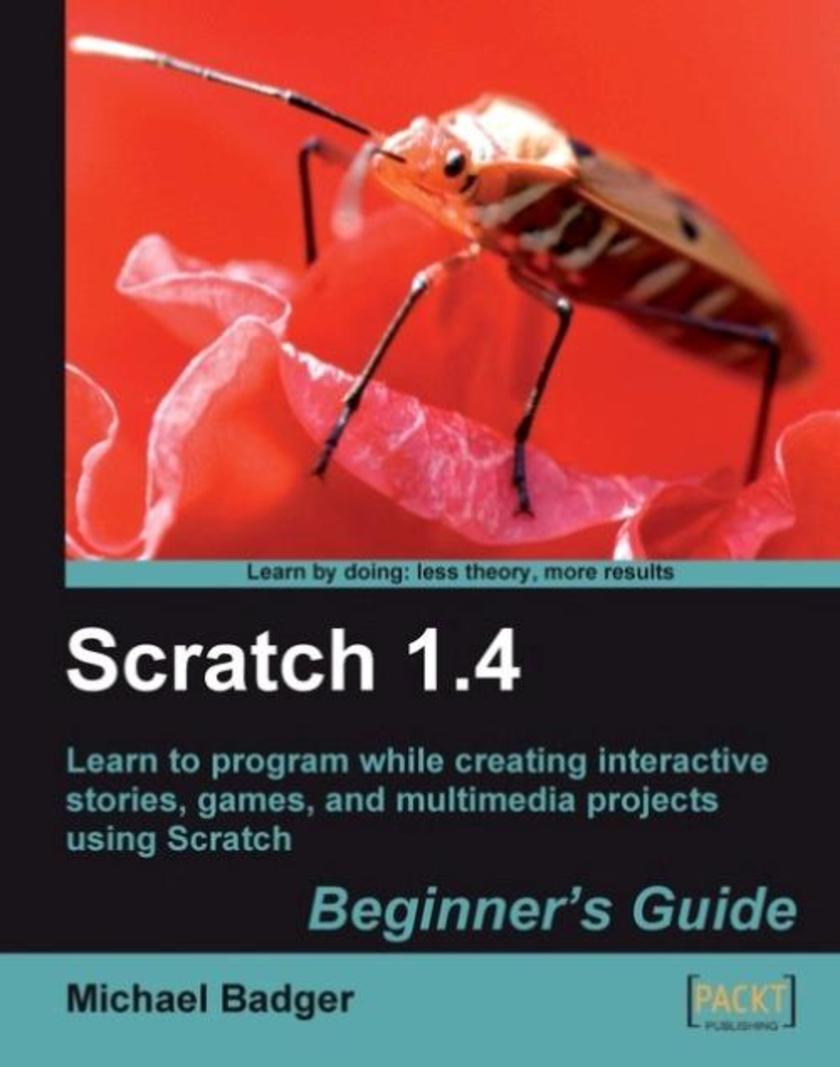
Scratch 1.4: Beginner’s Guide
¥71.93
This is a Packt Beginners Guide, which means it focuses on practical examples and has a friendly approach, with the opportunity to learn by experiment and play. We work through the project tutorials one block of code at a time, and we periodically pause to reflect on the relationship between our code blocks, our project, and Scratch programming in general. As you work through the book, you are encouraged to experiment with the concepts presented. As each chapter in the book progresses, the topics get increasingly more complex. Scratch is a teaching language, so it's ideal for people who want to learn how to program or teach others how to program. Educators and parents will learn how to program using Scratch, so they can use Scratch to teach the latest learning skills to their students and children. No previous computer programming knowledge is required. You only need to know how to perform basic tasks on a computer and this book will teach the rest. You can then use it as a platform to learn more advanced programming languages. Parents, stuck with a child who wants to play video games all nightMake a new rule. He can only play a video game if he programs the game first.
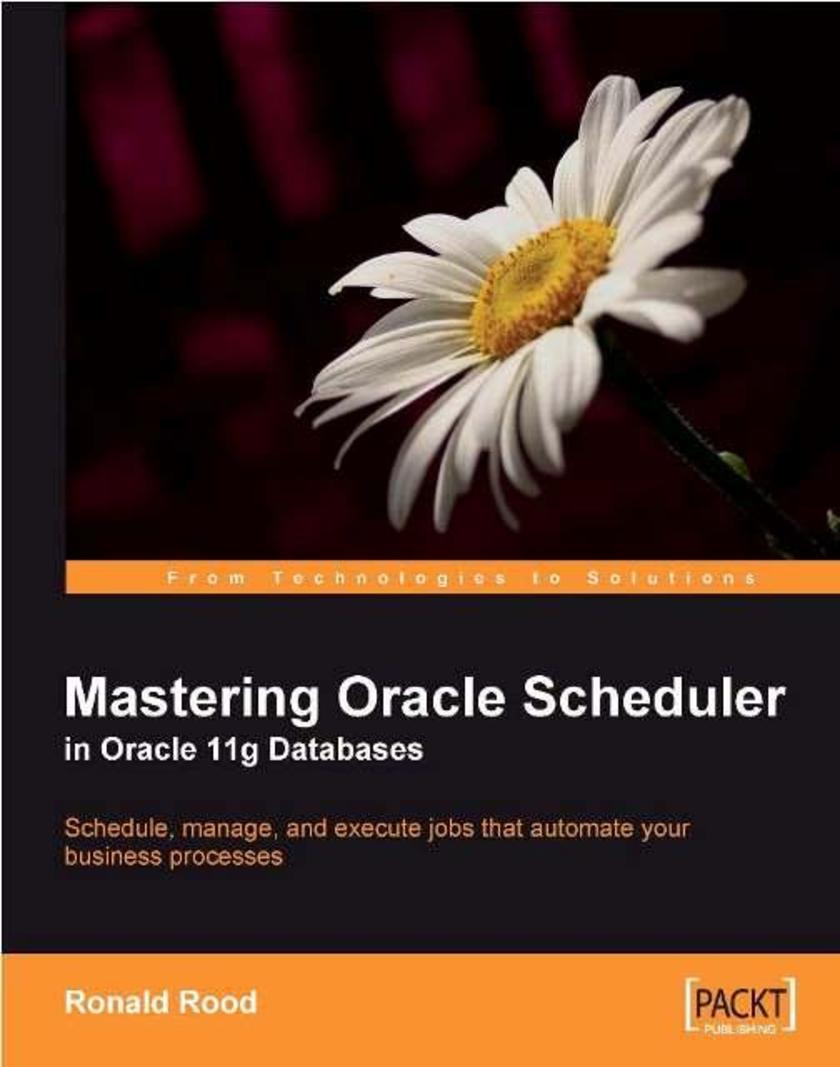
Mastering Oracle Scheduler in Oracle 11g Databases
¥71.93
This is your practical guide to setting up a working environment and using Oracle Scheduler. Packed with simple examples and clear explanations, real-life scenarios are discussed to make you comfortable in implementing them in your own system. This book is intended for Administrators and Developers who currently use tools like cron, DBMS_JOB, and the task manager, but who now want more control or who have a need to scale up to tools that can handle the network. Complex tasks can be built that easily control business process and enable the completion of important tasks in limited time. The reader is expected to have some experience of Oracle Database Management, and a working knowledge of SQL and PL/SQL.
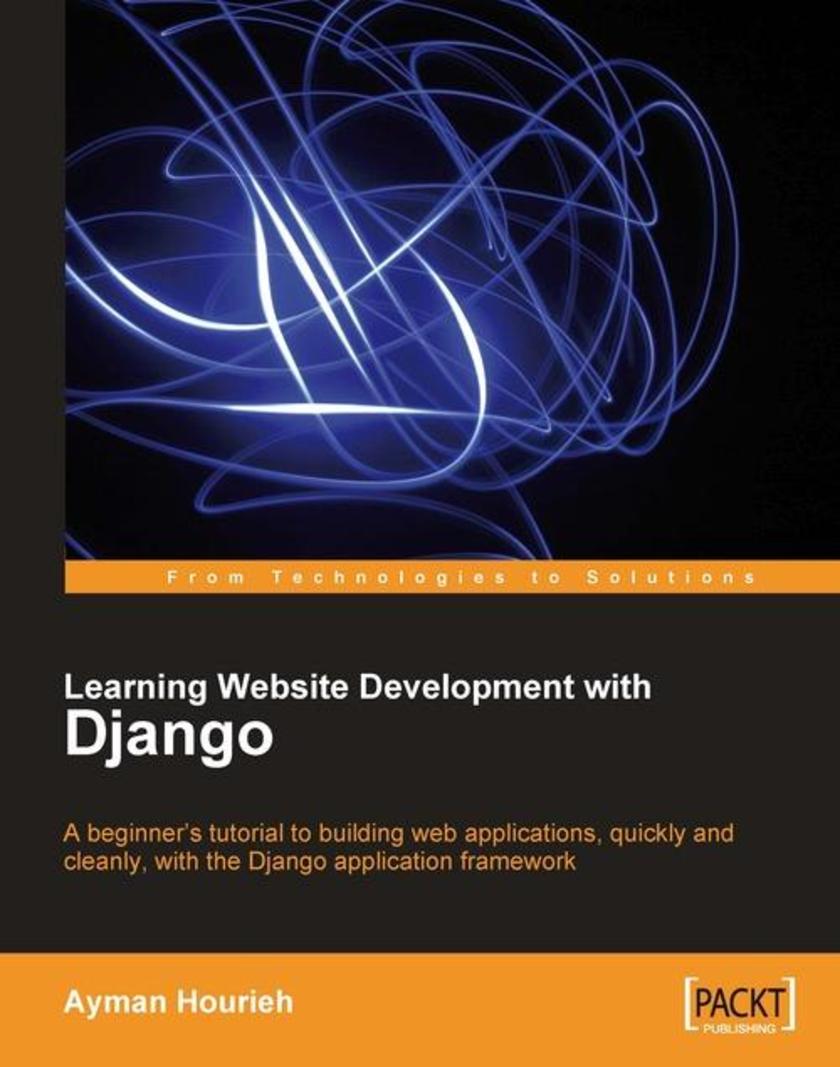
Learning Website Development with Django
¥71.93
Being a beginner's guide this book has a very simple and clear approach. It is a practical guide that will help you learn the features of Django and help you build a dynamic website using those features. This book is for web developers who want to see how to build a complete site with Web 2.0 features, using the power of a proven and popular development system, but do not necessarily want to learn how a complete framework functions in order to do this. Basic knowledge of Python development is required for this book, but no knowledge of Django is expected.
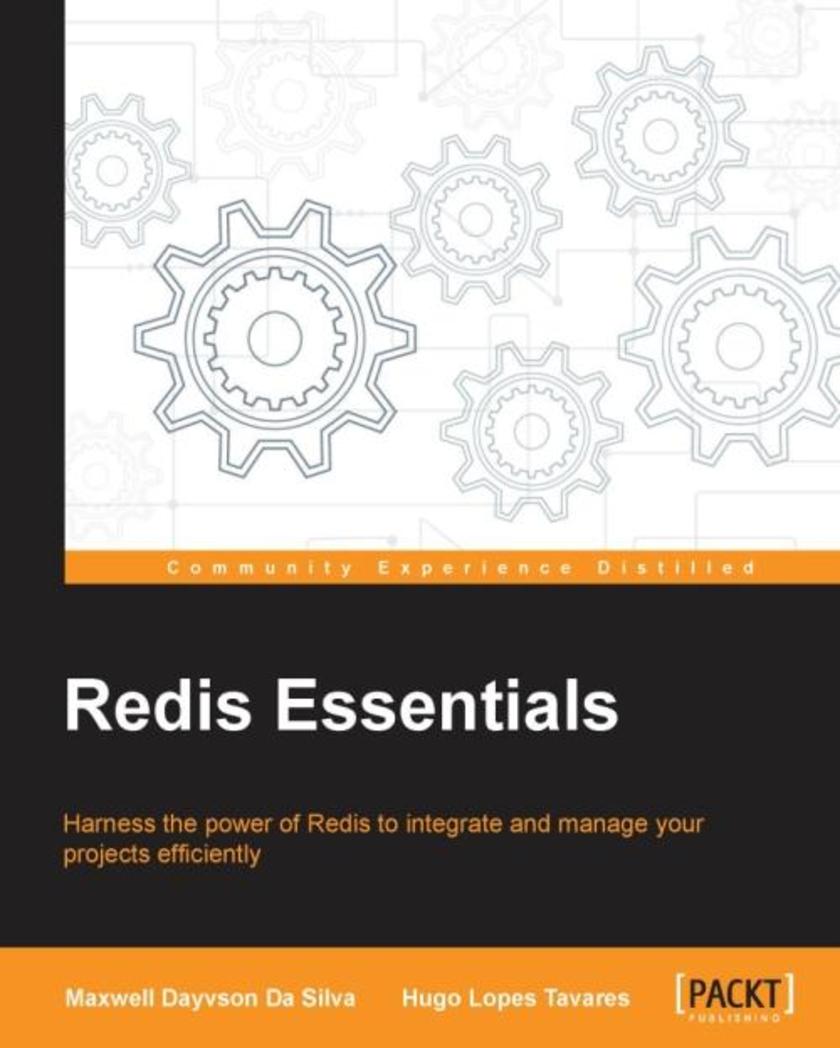
Redis Essentials
¥71.93
Harness the power of Redis to integrate and manage your projects efficiently About This Book Learn how to use Redis's data types efficiently to manage large data sets Scale Redis to multiple servers with Twemproxy, Redis Sentinel, and Redis Cluster A fast-paced guide, full of real-world examples to help you get the best out of the features offered by Redis Who This Book Is For If you are a competent developer with experience of working with data structure servers and want to boost your project's performance by learning about features of Redis, then this book is for you. What You Will Learn Build analytics applications using Bitmaps and Hyperloglogs Enhance scalability with Twemproxy, Redis Sentinel, and Redis Cluster Build a Time Series implementation in Node.js and Redis Create your own Redis commands by extending Redis with Lua Get to know security techniques to protect your data (SSL encryption, firewall rules, basic authorization) Persist data to disk and learn the trade-offs of AOF and RDB Understand how to use Node.js, PHP, Python, and Ruby clients for Redis Avoid common pitfalls when designing your next solution In Detail Redis is the most popular in-memory key-value data store. It’s very lightweight and its data types give it an edge over the other competitors. If you need an in-memory database or a high-performance cache system that is simple to use and highly scalable, Redis is what you need. Redis Essentials is a fast-paced guide that teaches the fundamentals on data types, explains how to manage data through commands, and shares experiences from big players in the industry. We start off by explaining the basics of Redis followed by the various data types such as Strings, hashes, lists, and more. Next, Common pitfalls for various scenarios are described, followed by solutions to ensure you do not fall into common traps. After this, major differences between client implementations in PHP, Python, and Ruby are presented. Next, you will learn how to extend Redis with Lua, get to know security techniques such as basic authorization, firewall rules, and SSL encryption, and discover how to use Twemproxy, Redis Sentinel, and Redis Cluster to scale infrastructures horizontally. At the end of this book, you will be able to utilize all the essential features of Redis to optimize your project's performance. Style and approach A practical guide that offers the foundation upon which you can begin to understand the capabilities of Redis using a step-by-step approach. This book is full of real-world problems and in-depth knowledge of the concepts and features of Redis, with plenty of examples.
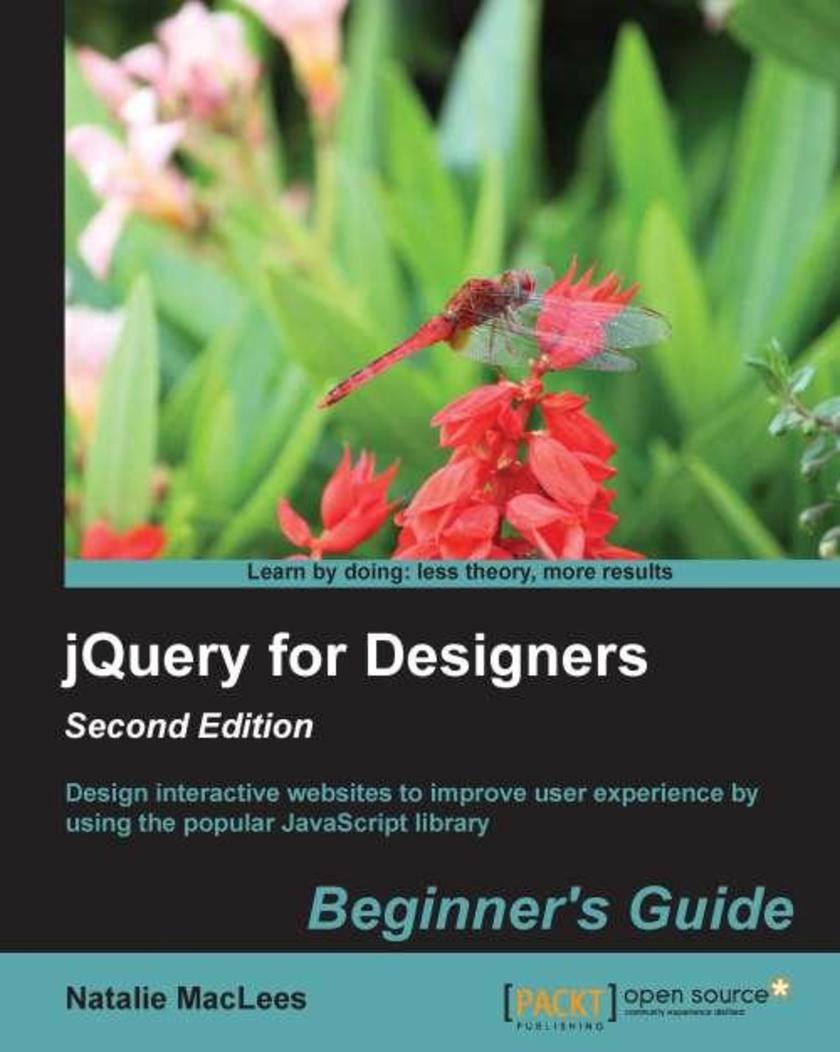
jQuery for Designers Beginner's Guide: Second Edition
¥71.93
A step-by-step guide that spices up your web pages and designs them in the way you want using the most widely used JavaScript library, jQuery. The beginner-friendly and easy-to-understand approach of the book will help get to grips with jQuery in no time. If you know the fundamentals of HTML and CSS, and want to extend your knowledge by learning to use JavaScript, then this is just the book for you. jQuery makes JavaScript straightforward and approachable – you'll be surprised at how easy it can be to add animations and special effects to your beautifully designed pages.
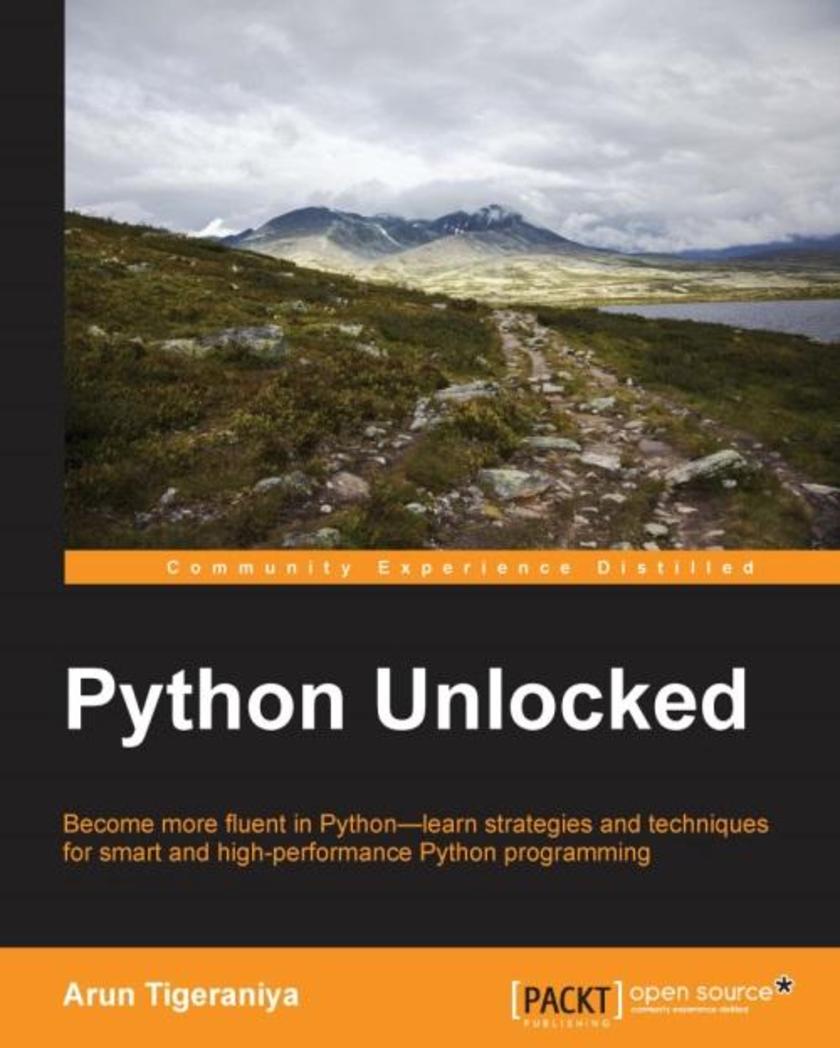
Python Unlocked
¥71.93
Become more fluent in Python—learn strategies and techniques for smart and high-performance Python programming About This Book Write smarter, bug-free, high performance code with minimal effort Uncover the best tools and options available to Python developers today Deploy decorators, design patters, and various optimization techniques to use Python 3.5 effectively Who This Book Is For If you are a Python developer and you think that you don’t know everything about the language yet, then this is the book for you. We will unlock the mysteries and re-introduce you to the hidden features of Python to write efficient programs, making optimal use of the language. What You Will Learn Manipulate object creation processes for instances, classes, and functions Use the best possible language constructs to write data structures with super speed and maintainability Make efficient use of design patterns to decrease development time and make your code more maintainable Write better test cases with an improved understanding of the testing framework of Python and unittests, and discover how to develop new functionalities in it Write fully-optimized code with the Python language by profiling, compiling C modules, and more Unlock asynchronous programming to build efficient and scalable applications In Detail Python is a versatile programming language that can be used for a wide range of technical tasks—computation, statistics, data analysis, game development, and more. Though Python is easy to learn, it’s range of features means there are many aspects of it that even experienced Python developers don’t know about. Even if you’re confident with the basics, its logic and syntax, by digging deeper you can work much more effectively with Python – and get more from the language. Python Unlocked walks you through the most effective techniques and best practices for high performance Python programming - showing you how to make the most of the Python language. You’ll get to know objects and functions inside and out, and will learn how to use them to your advantage in your programming projects. You will also find out how to work with a range of design patterns including abstract factory, singleton, strategy pattern, all of which will help make programming with Python much more efficient. Finally, as the process of writing a program is never complete without testing it, you will learn to test threaded applications and run parallel tests. If you want the edge when it comes to Python, use this book to unlock the secrets of smarter Python programming. Style and approach This is book had been created to help you to “unlock” the best ways to tackle the challenges and performance bottlenecks that many Python developers face today. The keys are supported with program examples to help you understand the concepts better and see them in action.
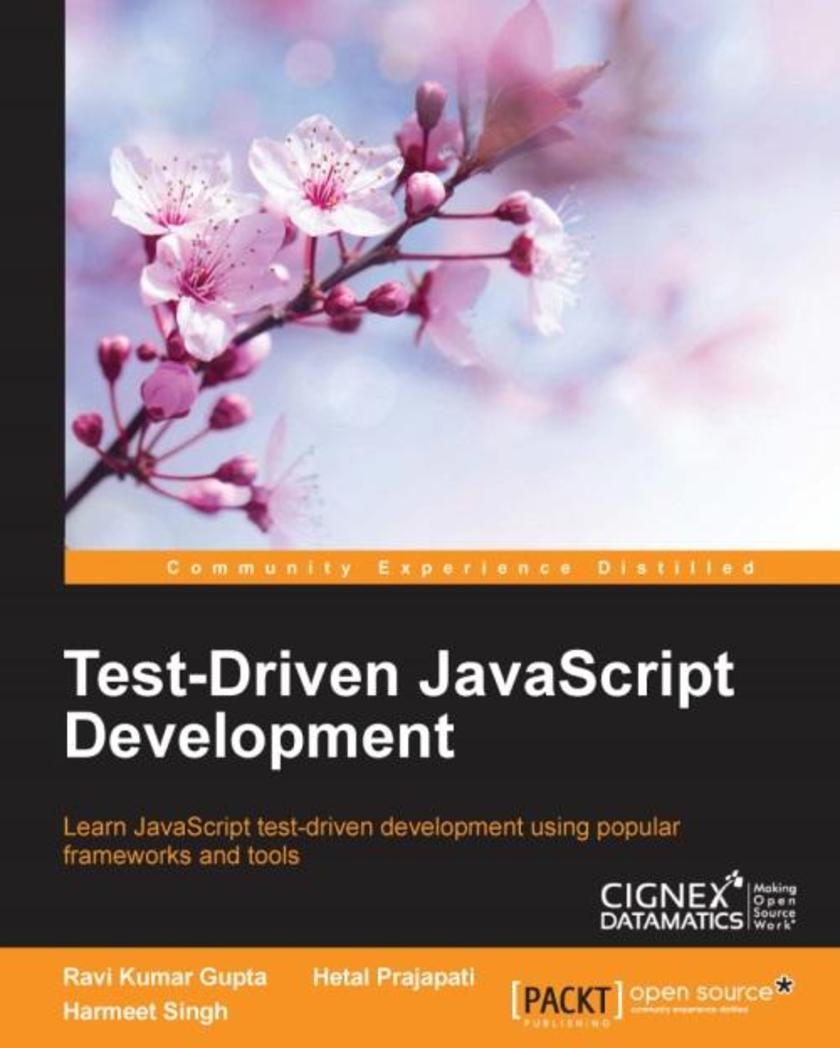
Test-Driven JavaScript Development
¥71.93
Learn JavaScript test-driven development using popular frameworks and tools About This Book Learn the life cycle of TDD and its importance in real-world application Gain knowledge about popular tools and analyze features, syntax, and how they help in JavaScript testing Implement test-driven programming exercises using the practical code examples Who This Book Is For If you have an intermediate knowledge of HTML, CSS, and JavaScript and want to learn how and why the test-driven development approach is better for your assignments, then this book is for you. What You Will Learn Basic TDD fundamentals, life cycle, and benefits Become acquainted with the concepts and elements of unit testing and writing basic unit tests for JavaScript Understand the way JsUnit, Qunit, Karma and DalekJs work Use the Jasmine framework Interpret feature detection and devise tests specific to cross-browser compatibility Integrate jsTestDriver with Eclipse and run tests with jsTestDriver Explore re-factoring, adding and notifying observers Understand test-driven development in case of server-side JS In Detail Initially, all processing used to happen on the server-side and simple output was the response to web browsers. Nowadays, there are so many JavaScript frameworks and libraries created that help readers to create charts, animations, simulations, and so on. By the time a project finishes or reaches a stable state, so much JavaScript code has already been written that changing and maintaining it further is tedious. Here comes the importance of automated testing and more specifically, developing all that code in a test-driven environment. Test-driven development is a methodology that makes testing the central part of the design process – before writing code developers decide upon the conditions that code must meet to pass a test. The end goal is to help the readers understand the importance and process of using TDD as a part of development. This book starts with the details about test-driven development, its importance, need, and benefits. Later the book introduces popular tools and frameworks like YUI, Karma, QUnit, DalekJS, JsUnit and goes on to utilize Jasmine, Mocha, Karma for advanced concepts like feature detection, server-side testing, and patterns. We are going to understand, write, and run tests, and further debug our programs. The book concludes with best practices in JavaScript testing. By the end of the book, the readers will know why they should test, how to do it most efficiently, and will have a number of versatile tests (and methods for devising new tests) to get to work immediately. Style and approach Easy-to-follow guide with suitable examples for developing JavaScript code in the test-Driven environment, with popular tools and frameworks. User experience and statements are also included to help readers make a better choice of tool for real-world projects.
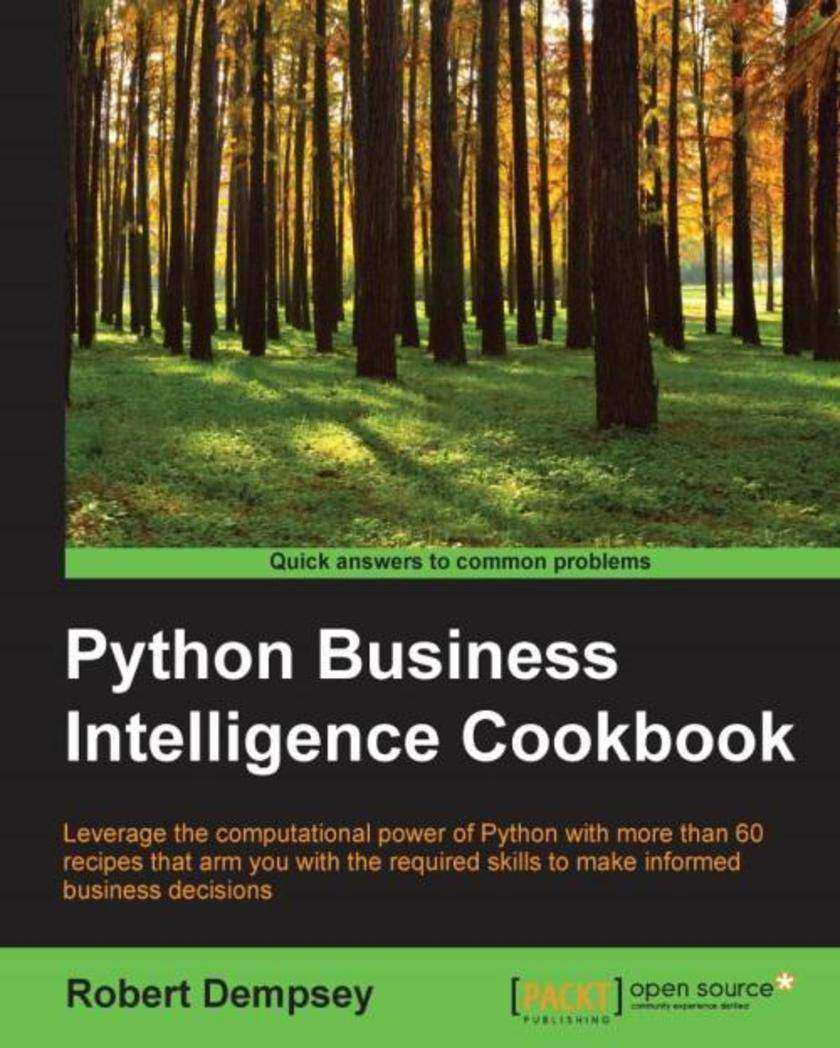
Python Business Intelligence Cookbook
¥71.93
Leverage the computational power of Python with more than 60 recipes that arm you with the required skills to make informed business decisions About This Book Want to minimize risk and optimize profits of your businessLearn to create efficient analytical reports with ease using this highly practical, easy-to-follow guide Learn to apply Python for business intelligence tasks—preparing, exploring, analyzing, visualizing and reporting—in order to make more informed business decisions using data at hand Learn to explore and analyze business data, and build business intelligence dashboards with the help of various insightful recipes Who This Book Is For This book is intended for data analysts, managers, and executives with a basic knowledge of Python, who now want to use Python for their BI tasks. If you have a good knowledge and understanding of BI applications and have a “working” system in place, this book will enhance your toolbox. What You Will Learn Install Anaconda, MongoDB, and everything you need to get started with your data analysis Prepare data for analysis by querying cleaning and standardizing data Explore your data by creating a Pandas data frame from MongoDB Gain powerful insights, both statistical and predictive, to make informed business decisions Visualize your data by building dashboards and generating reports Create a complete data processing and business intelligence system In Detail The amount of data produced by businesses and devices is going nowhere but up. In this scenario, the major advantage of Python is that it's a general-purpose language and gives you a lot of flexibility in data structures. Python is an excellent tool for more specialized analysis tasks, and is powered with related libraries to process data streams, to visualize datasets, and to carry out scientific calculations. Using Python for business intelligence (BI) can help you solve tricky problems in one go. Rather than spending day after day scouring Internet forums for “how-to” information, here you’ll find more than 60 recipes that take you through the entire process of creating actionable intelligence from your raw data, no matter what shape or form it’s in. Within the first 30 minutes of opening this book, you’ll learn how to use the latest in Python and NoSQL databases to glean insights from data just waiting to be exploited.< We’ll begin with a quick-fire introduction to Python for BI and show you what problems Python solves. From there, we move on to working with a predefined data set to extract data as per business requirements, using the Pandas library and MongoDB as our storage engine. Next, we will analyze data and perform transformations for BI with Python. Through this, you will gather insightful data that will help you make informed decisions for your business. The final part of the book will show you the most important task of BI—visualizing data by building stunning dashboards using Matplotlib, PyTables, and iPython Notebook. Style and approach This is a step-by-step guide to help you prepare, explore, analyze and report data, written in a conversational tone to make it easy to grasp. Whether you’re new to BI or are looking for a better way to work, you’ll find the knowledge and skills here to get your job done efficiently.
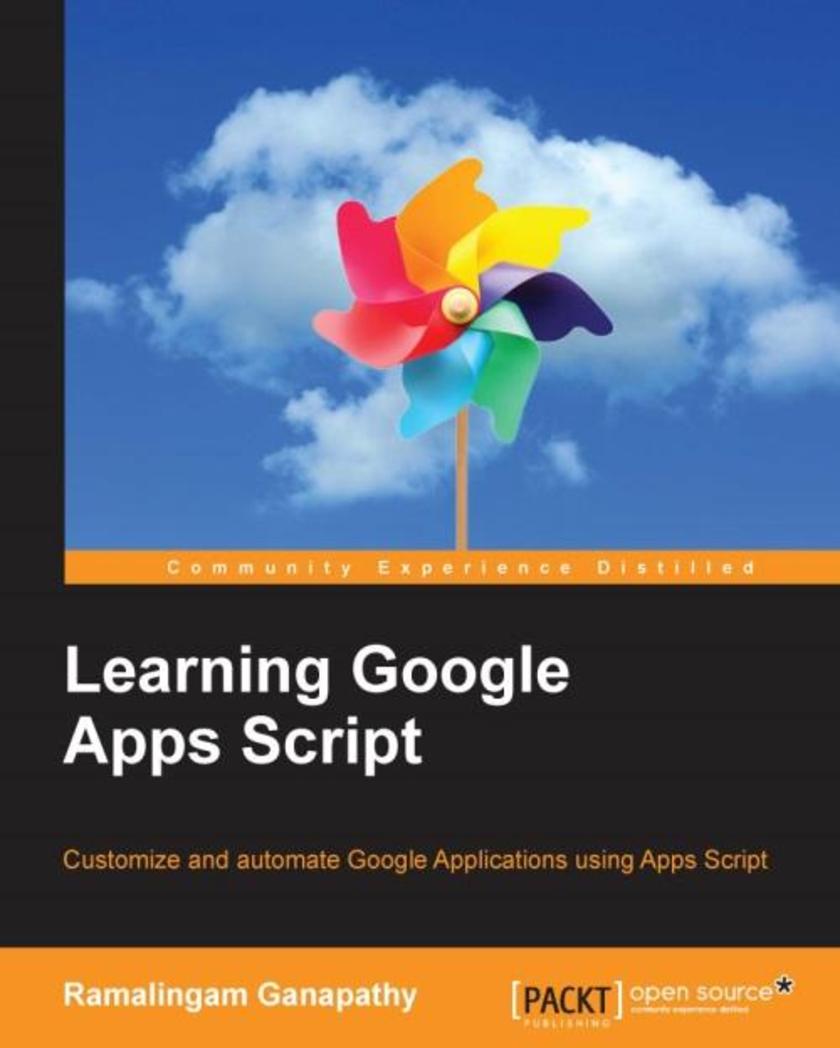
Learning Google Apps Script
¥71.93
Customize and automate Google Applications using Apps Script About This Book Gain insight into customizing and automating Google applications with JavaScript Create add-ons for Google Sheets, Docs, or Forms; automate your workflow; integrate with external APIs; and more. A step-by-step guide to building real-world solutions Who This Book Is For Newbies to google apps * but having practical experience in Java*. What You Will Learn Learn about the Google Apps * platform and work with *s to develop Google apps Create custom menus and dialogs Parse and send emails Generate Google calendar events Build Translator and RSS reader applications Develop interactive web pages Design interactive web-forms Form a workflow application In Detail Google Apps Script is a cloud-based *ing language based on JavaScript to customize and automate Google applications. Apps Script makes it easy to create and publish add-ons in an online store for Google Sheets, Docs, and Forms. It serves as one single platform to build, code, and ultimately share your App on the Web store. This book begins by covering the basics of the Google application platform and goes on to empower you to automate most of the Google applications. You will learn the concepts of creating a menu, sending mails, building interactive web pages, and implementing all these techniques to develop an interactive Web page as a form to submit sheets You will be guided through all these tasks with plenty of screenshots and code snippets that will ensure your success in customizing and automating various Google applications This guide is an invaluable tutorial for beginners who intend to develop the skills to automate and customize Google applications Style and approach An easy-to-follow yet comprehensive guide, filled with many code examples and screenshots illustrating various Google Apps *s.

Web Application Development with R Using Shiny - Second Edition
¥71.93
Integrate the power of R with the simplicity of Shiny to deliver cutting-edge analytics over the WebAbout This BookUse Shiny's built-in functions to produce engaging user interfaces, and integrate them into your own web pagesImplement powerful user-contributed packages to access graphics from the web, make your own dashboards, use interactive maps, and moreExtend Shiny using JavaScript and jQuery with minimal coding using this handy, step-by-step guideWho This Book Is ForThis book is for anybody who wants to produce interactive data summaries over the web, whether you want to share them with a few colleagues or the whole world. No previous experience with R, Shiny, HTML, or CSS is required to begin using this book, although you should possess some previous experience with programming in a different language.What You Will LearnBuild interactive applications using Shiny's built-in widgetsUse the built-in layout functions in Shiny to produce user-friendly applicationsIntegrate Shiny applications with web pages and customize them using HTML and CSSHarness the power of JavaScript and jQuery to customize your applicationsEngage your users and build better analytics using interactive plotsDebug your applications using Shiny's built-in functionsDeliver simple and powerful analytics across your organization using Shiny dashboardsShare your applications with colleagues or over the Internet using cloud services or your own serverIn DetailR is a highly flexible and powerful tool for analyzing and visualizing data. Most of the applications built using various libraries with R are desktop-based. But what if you want to go on the webHere comes Shiny to your rescue!Shiny allows you to create interactive web applications using the excellent analytical and graphical capabilities of R. This book will guide you through basic data management and analysis with R through your first Shiny application, and then show you how to integrate Shiny applications with your own web pages. Finally, you will learn how to finely control the inputs and outputs of your application, along with using other packages to build state-of-the-art applications, including dashboards.Style and approachLearn by doing! Each chapter includes code and examples to use and adapt for your own applications. As the chapters progress, the code and examples are built upon until you have all the materials required to build a large, complex, real-world analytics application.
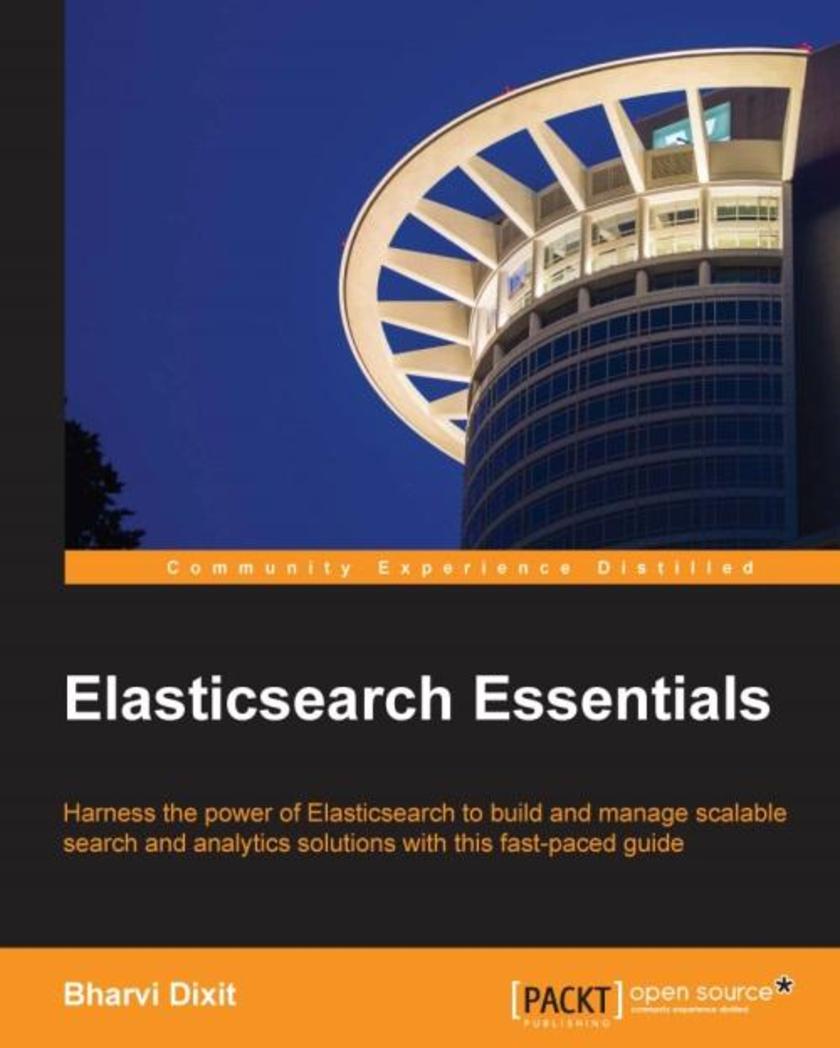
Elasticsearch Essentials
¥71.93
Harness the power of ElasticSearch to build and manage scalable search and analytics solutions with this fast-paced guideAbout This BookNew to ElasticSearchHere’s what you need—a highly practical guide that gives you a quick start with ElasticSearch using easy-to-follow examples; get up and running with ElasticSearch APIs in no timeGet the latest guide on ElasticSearch 2.0.0, which contains concise and adequate information on handling all the issues a developer needs to know while handling data in bulk with search relevancyLearn to create large-scale ElasticSearch clusters using best practicesLearn from our experts—written by Bharvi Dixit who has extensive experience in working with search servers (especially ElasticSearch)Who This Book Is ForAnyone who wants to build efficient search and analytics applications can choose this book. This book is also beneficial for skilled developers, especially ones experienced with Lucene or Solr, who now want to learn Elasticsearch quickly.What You Will LearnGet to know about advanced Elasticsearch concepts and its REST APIsWrite CRUD operations and other search functionalities using the ElasticSearch Python and Java clientsDig into wide range of queries and find out how to use them correctlyDesign schema and mappings with built-in and custom analyzersExcel in data modeling concepts and query optimizationMaster document relationships and geospatial dataBuild analytics using aggregationsSetup and scale Elasticsearch clusters using best practicesLearn to take data backups and secure Elasticsearch clustersIn DetailWith constantly evolving and growing datasets, organizations have the need to find actionable insights for their business. ElasticSearch, which is the world's most advanced search and analytics engine, brings the ability to make massive amounts of data usable in a matter of milliseconds. It not only gives you the power to build blazing fast search solutions over a massive amount of data, but can also serve as a NoSQL data store.This guide will take you on a tour to become a competent developer quickly with a solid knowledge level and understanding of the ElasticSearch core concepts. Starting from the beginning, this book will cover these core concepts, setting up ElasticSearch and various plugins, working with analyzers, and creating mappings. This book provides complete coverage of working with ElasticSearch using Python and performing CRUD operations and aggregation-based analytics, handling document relationships in the NoSQL world, working with geospatial data, and taking data backups. Finally, we’ll show you how to set up and scale ElasticSearch clusters in production environments as well as providing some best practices.Style and approachThis is an easy-to-follow guide with practical examples and clear explanations of the concepts. This fast-paced book believes in providing very rich content focusing majorly on practical implementation. This book will provide you with step-by-step practical examples, letting you know about the common errors and solutions along with ample screenshots and code to ensure your success.
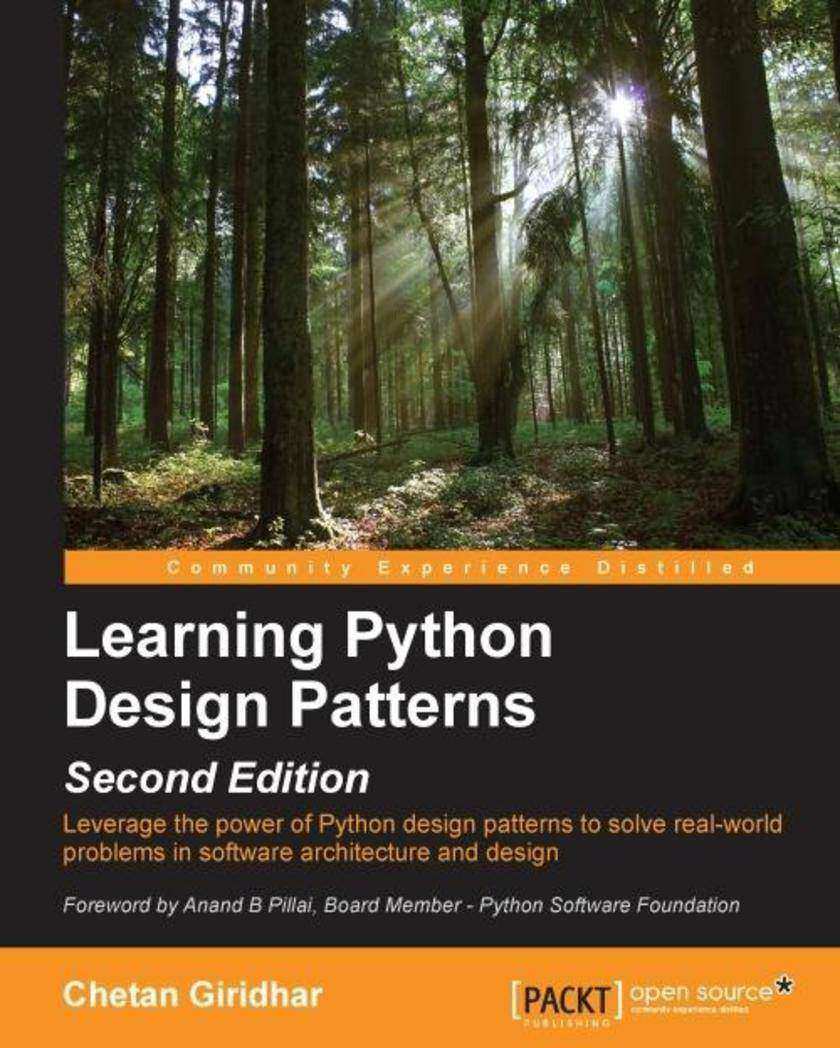
Learning Python Design Patterns - Second Edition
¥71.93
Leverage the power of Python design patterns to solve real-world problems in software architecture and designAbout This BookUnderstand the structural, creational, and behavioral Python design patternsGet to know the context and application of design patterns to solve real-world problems in software architecture, design, and application developmentGet practical exposure through sample implementations in Python v3.5 for the design patterns featuredWho This Book Is ForThis book is for Software architects and Python application developers who are passionate about software design. It will be very useful to engineers with beginner level proficiency in Python and who love to work with Python 3.5What You Will LearnEnhance your skills to create better software architectureUnderstand proven solutions to commonly occurring design issuesExplore the design principles that form the basis of software design, such as loose coupling, the Hollywood principle and the Open Close principle among othersDelve into the object-oriented programming concepts and find out how they are used in software applicationsDevelop an understanding of Creational Design Patterns and the different object creation methods that help you solve issues in software developmentUse Structural Design Patterns and find out how objects and classes interact to build larger applicationsFocus on the interaction between objects with the command and observer patternsImprove the productivity and code base of your application using Python design patternsIn DetailWith the increasing focus on optimized software architecture and design it is important that software architects think about optimizations in object creation, code structure, and interaction between objects at the architecture or design level. This makes sure that the cost of software maintenance is low and code can be easily reused or is adaptable to change. The key to this is reusability and low maintenance in design patterns.Building on the success of the previous edition, Learning Python Design Patterns, Second Edition will help you implement real-world scenarios with Python’s latest release, Python v3.5.We start by introducing design patterns from the Python perspective. As you progress through the book, you will learn about Singleton patterns, Factory patterns, and Fa?ade patterns in detail. After this, we’ll look at how to control object access with proxy patterns. It also covers observer patterns, command patterns, and compound patterns.By the end of the book, you will have enhanced your professional abilities in software architecture, design, and development.Style and approachThis is an easy-to-follow guide to design patterns with hands-on examples of real-world scenarios and their implementation in Python v3.5. Each topic is explained and placed in context, and for the more inquisitive, there are more details on the concepts used.
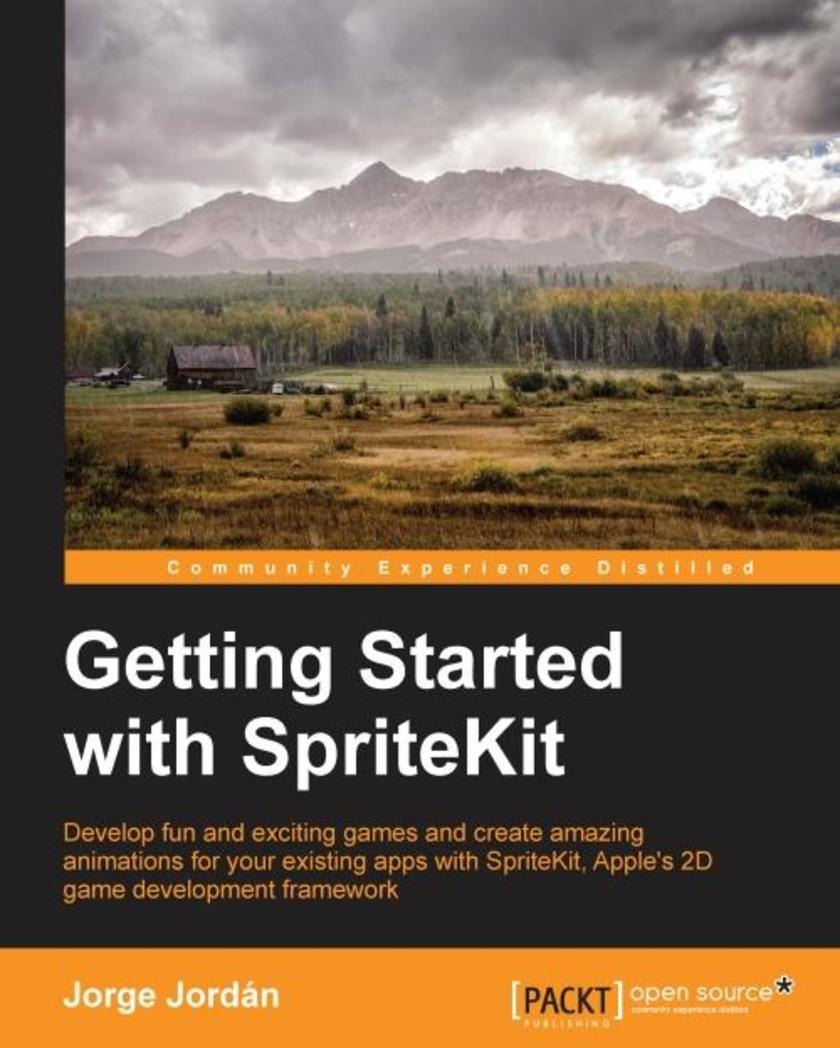
Getting Started with SpriteKit
¥71.93
Develop fun and exciting games and create amazing animations for your existing apps with SpriteKit, Apple's 2D game development frameworkAbout This BookLearn the key concepts of game development in iOSTake advantage of SpriteKit to create your own games and improve your appsFollow the step-by-step chapters to create a complete product ready to submit to the App StoreWho This Book Is ForGetting Started with SpriteKit is for beginner-level iOS developers who want to add an extra edge to their apps and create amazing games using SpriteKit. It doesn’t matter whether you have experience in iOS development or not as this book will show you the swift tricks you can use to create games.What You Will LearnCreate and configure a SpriteKit project from scratchLoad and manage the basic elements of games such as sprites, labels, and geometrical primitivesHandle touch events, detect collisions, and play sound audio filesCreate complex elements, animate sprites, and run the parallax effectComplete your games with key components such as a main menu, transitions between scenes, a tutorial, and the ability to load and save dataIncrease the efficiency of your device using the accelerometer or by adding shaders, lights, and shadowsGain complementary techniques such as creating or finding audio resources, applying SpriteKit to apps, or using third-party toolsIn DetailSpriteKit is Apple’s game engine to develop native iOS games. Strongly boosted by the Apple Inc., Cupertino, it has increased in popularity since its first release. This book shows you the solutions provided by SpriteKit to help you create any 2D game you can imagine and apply them to create animations that will highlight your existing apps.This book will give you the knowledge you need to apply SpriteKit to your existing apps or create your own games from scratch.Throughout the book, you will develop a complete game. The beautiful designs implemented in the game in this book will easily lead you to learn the basis of 2D game development, including creating and moving sprites, and adding them to a game scene. You will also discover how to apply advanced techniques such as collision detection, action execution, playing music, or running animations to give a more professional aspect to the game. You will finish your first game by learning how to add a main menu and a tutorial, as well as saving and loading data from and to the player’s device.Finally, you will find out how to apply some mobile games techniques such as accelerometer use or touch detection.Style and approachWritten in an informal way with plenty of illustrative screenshots, this easy-to-follow and practical guide will help you get the most from SpriteKit. The main part of the book provides step-by-step instructions to develop of a complete product, while the last chapters give you some complementary techniques than can be used in mobile 2D game development.
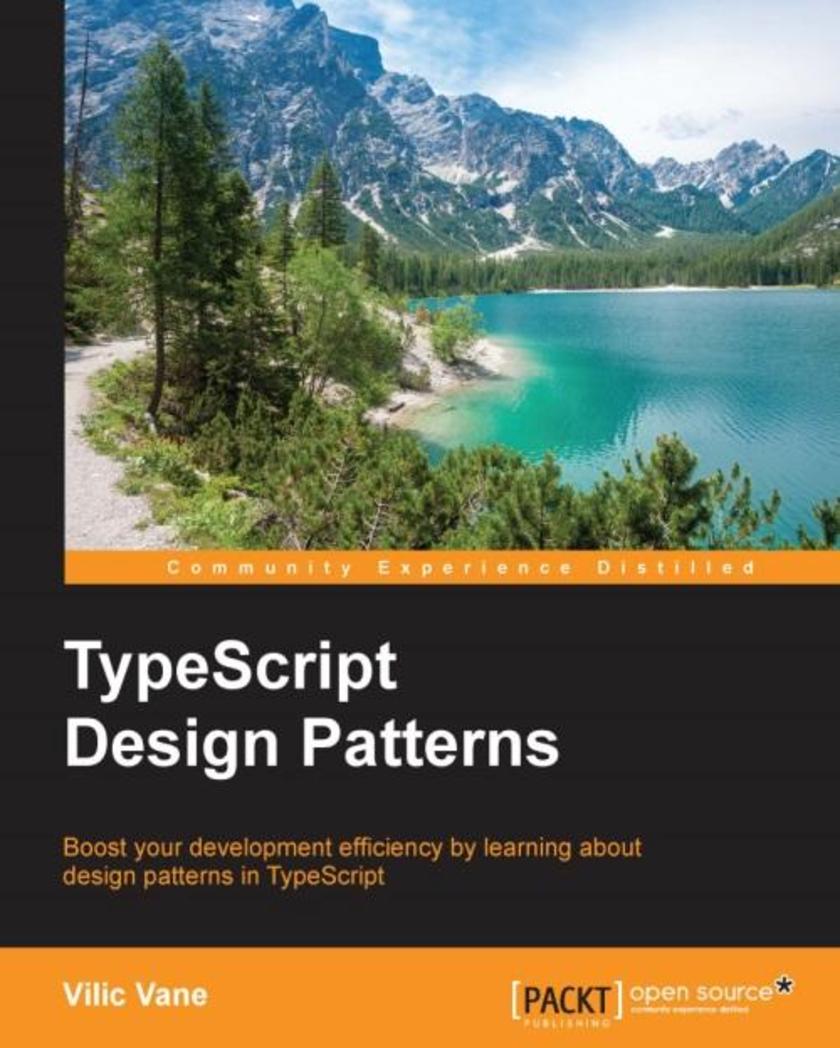
TypeScript Design Patterns
¥71.93
Boost your development efficiency by learning about design patterns in TypeScript About This Book This step-by-step guide will would demonstrate all the important design patterns in practice This book is the only documentation on the market focusing on design patterns in TypeScript This book is packed with rich examples that will improve your efficiency and encourage code reuse Who This Book Is For If you are a TypeScript developer, this book is for you. No knowledge of design patterns is required to read this book. What You Will Learn Understand the challenges and implications of developing an enterprise application Install and configure the necessary tools in order to start developing an application Identify the challenges when developing an application Apply GoF patterns in an application with a testing approach Use and utilize design patterns while developing a TypeScript application or during JavaScript application development Reference to SOLID principles and what their benefits do to your projects Apply various principles in a TypeScript application Improve code quality and development speed In Detail In programming, there are several problems that occur frequently. To solve these problems, there are various repeatable solutions that are known as design patterns. Design patterns are a great way to improve the efficiency of your programs and improve your productivity. This book is a collection of the most important patterns you need to improve your applications’ performance and your productivity. The journey starts by explaining the current challenges when designing and developing an application and how you can solve these challenges by applying the correct design pattern and best practices. Each pattern is accompanied with rich examples that demonstrate the power of patterns for a range of tasks, from building an application to code testing. We’ll introduce low-level programming concepts to help you write TypeScript code, as well as work with software architecture, best practices, and design aspects. Style and approach In this book, design patterns are explained in a step-by-step manner. All the major patterns covered will improve your understanding of TypeScript and the patterns associated with TypeScript.
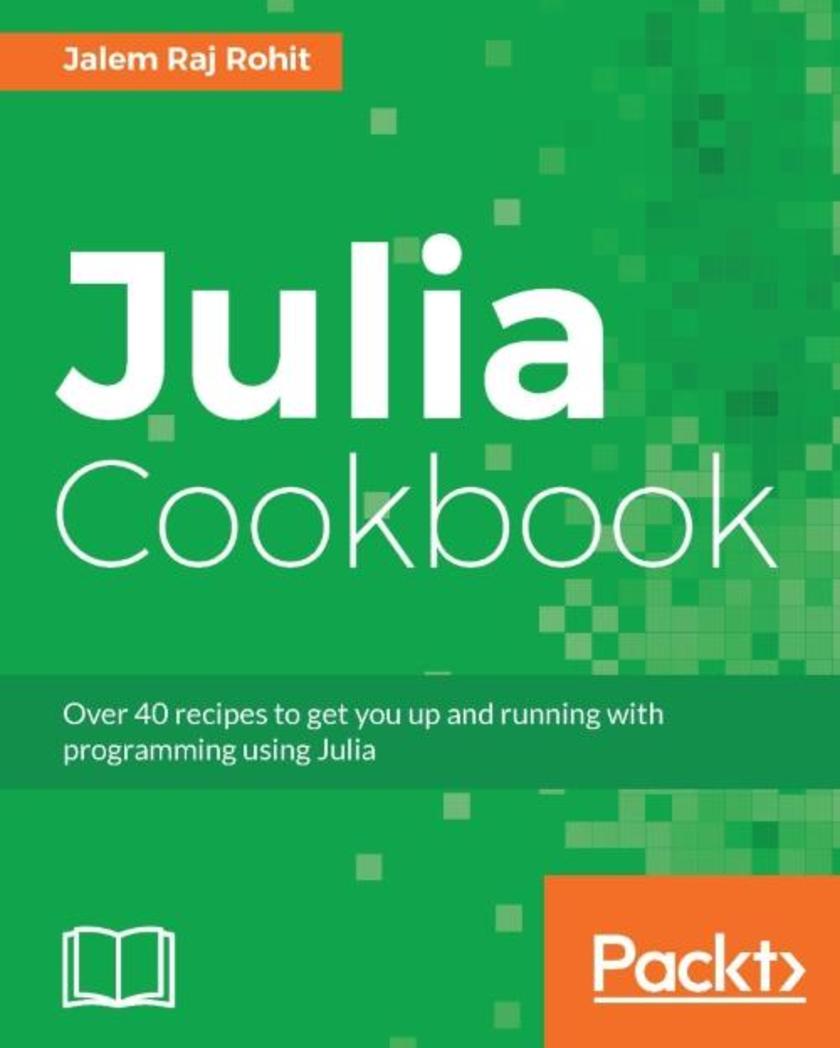
Julia Cookbook
¥71.93
Over 40 recipes to get you up and running with programming using Julia About This Book Follow a practical approach to learn Julia programming the easy way Get an extensive coverage of Julia’s packages for statistical analysis This recipe-based approach will help you get familiar with the key concepts in Juli Who This Book Is For This book is for data scientists and data analysts who are familiar with the basics of the Julia language. Prior experience of working with high-level languages such as MATLAB, Python, R, or Ruby is expected. What You Will Learn Extract and handle your data with Julia Uncover the concepts of metaprogramming in Julia Conduct statistical analysis with StatsBase.jl and Distributions.jl Build your data science models Find out how to visualize your data with Gadfly Explore big data concepts in Julia In Detail Want to handle everything that Julia can throw at you and get the most of it every dayThis practical guide to programming with Julia for performing numerical computation will make you more productive and able work with data more efficiently. The book starts with the main features of Julia to help you quickly refresh your knowledge of functions, modules, and arrays. We’ll also show you how to utilize the Julia language to identify, retrieve, and transform data sets so you can perform data analysis and data manipulation. Later on, you’ll see how to optimize data science programs with parallel computing and memory allocation. You’ll get familiar with the concepts of package development and networking to solve numerical problems using the Julia platform. This book includes recipes on identifying and classifying data science problems, data modelling, data analysis, data manipulation, meta-programming, multidimensional arrays, and parallel computing. By the end of the book, you will acquire the skills to work more effectively with your data. Style and approach This book has a recipe-based approach to help you grasp the concepts of Julia programming.

Mastering Android Wear Application Development
¥71.93
Master the future of mobile devices in wearable technology About This Book Mastering Android Wear Development is a complete guide to wearable technology for experienced Android developers Notifications, voice input, coping with round screens – all the key challenges of wearable technology are covered This book describes not just how to write code for wearables, but also how to think about wearable technology and design apps that work well with the physical limitations of wearable devices Who This Book Is For This book is for application developers (the web, mobile, and desktop) who are interested in building new wearable apps, and mobile developers who already have apps on iTunes or Google Play Store and are looking to provide Android Wear support for their existing Android or iOS apps. What You Will Learn Understand the Wearable computing technology Set up a development environment to build Android Wear apps using Android Studio Master the Android Wear SDK and APIs Understand the UI patterns and UX principles to build Android Wear apps Work with the different form factors of wearable devices (round and square) Take advantage of the sensors available on Android Wear devices Develop Android Wear sample apps Communicate between Android mobile and Android Wear apps Get to know the steps involved in publishing Android Wear apps to the Play store In Detail Wearable technology is the future of mobile devices. It looks set to be a breakthrough technology, just like the iPad was before it. With the Apple Watch being widely regarded as a success, all eyes are now on Google to provide a similar device for its users. Keep your skills ahead of the competition and be one of the first to fully understand this powerful new trend. This book will give you a very solid understanding of the philosophy, thought process, development details, and methodologies involved in building well-designed, robust Android Wear applications. We cover the advantages and disadvantages of the wearable computing paradigm and provide a good foundational knowledge for you to build practical, real-world wearable apps. You will learn about the various tools, platforms, libraries, SDKs, and technology needed to build Android Wear apps. By the end of the book, you will be an expert in building Android wearable apps. Style and approach This one-stop professional tutorial will teach you everything you need to know to begin designing and developing applications for this exciting new technology. Every step from development through testing to deployment is explained in depth.
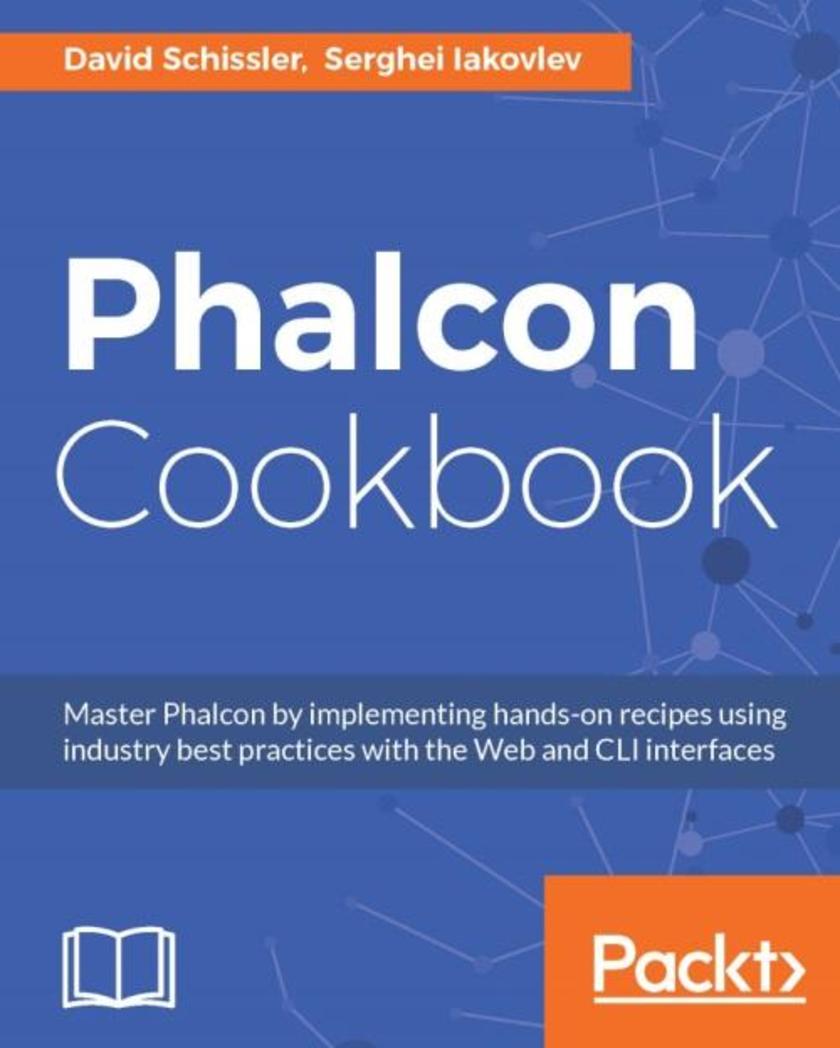
Phalcon Cookbook
¥71.93
Master Phalcon by implementing hands-on recipes using industry best practices with the Web and CLI interfaces About This Book Create quick prototypes with the Phalcon Developer Tools Learn to use the powerful and uniquely efficient Phalcon ORM Reuse codes in real projects Who This Book Is For If you are a beginner-to-intermediate Phalcon developer who wants to level up or an advanced user who is seeking some new techniques and insight, then this book is perfect for you. This book will be relevant to you over a long period of time due to the mixed nature of this book in providing both abstract comprehension as well as specific examples meant to be usable in your projects. You will be able to experiment with each new aspect of integration in prebuilt recipes meant to best illustrate each specific feature. This will save you lots of time getting up to speed before attempting to integrate into a real application. What You Will Learn Install the Phalcon extension from both premade packages and source code Create a normal and micro application structure Understand the dispatcher event cycle and create custom plugins Get hands-on using the Phalcon Query Language and ORM Create flexible views with the Volt template system Leverage Phalcon to prevent common security vulnerabilities Optimize an application with focused solutions Profile and debug an application to get increased reliability In Detail Phalcon is a high-performance PHP framework delivered as a PHP extension. This provides new opportunities for speed and application design, which until recently have been unrealized in the PHP ecosystem. Packed with simple learning exercises, technology prototypes, and real-world usable code, this book will guide you from the beginner and setup stage all the way to advanced usage. You will learn how to avoid niche pitfalls, how to use the command-line developer tools, how to integrate with new web standards, as well as how to set up and customize the MVC application structure. You will see how Phalcon can be used to quickly set up a single file web application as well as a complex multi-module application suitable for long-term projects. Some of the recipes focus on abstract concepts that are vital to get a deep comprehension of Phalcon and others are designed as a vehicle to deliver real-world usable classes and code snippets to solve advanced problems. You’ll start out with basic setup and application structure and then move onto the Phalcon MVC and routing implementation, the power of the ORM and Phalcon Query Language, and Phalcon’s own Volt templating system. Finally, you will move on to caching, security, and optimization. Style and approach An easy-to-start guide that provides
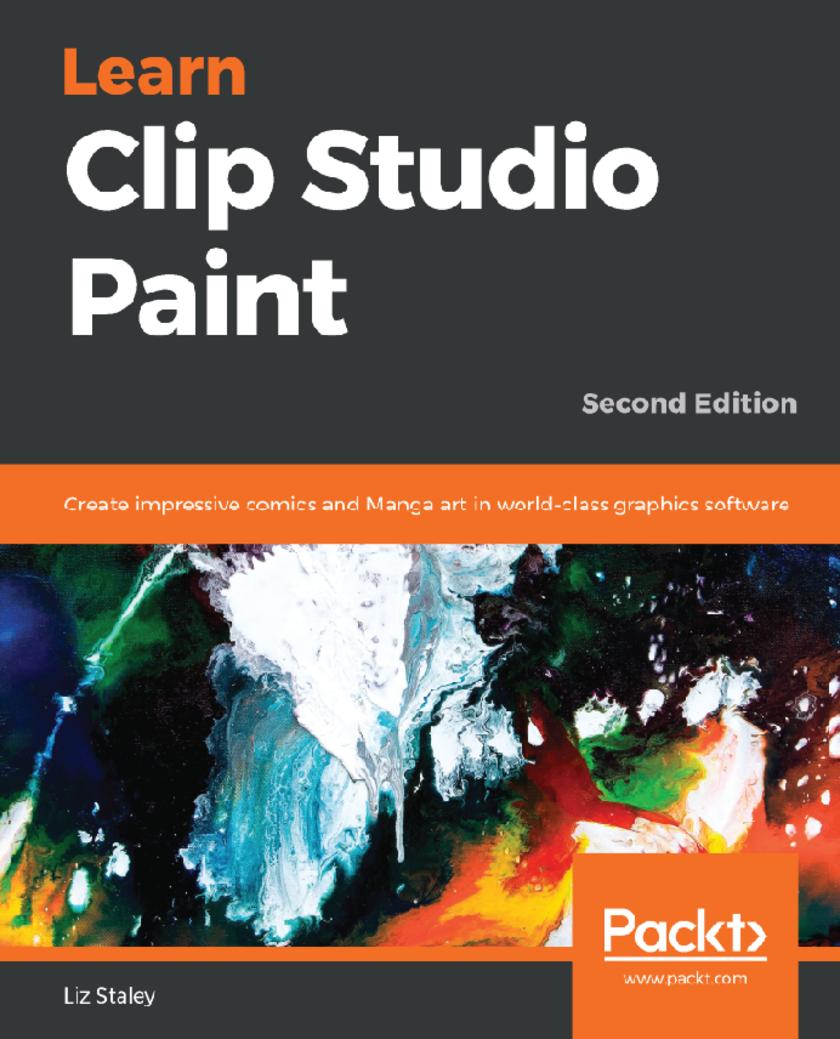
Learn Clip Studio Paint
¥71.93
Take your comics and illustrations to the next level with the powerful art tools in Clip Studio Paint 1.8 Key Features *Overcome “interface overwhelm” with a practical breakdown of the Clip Studio interface *Comprehensive guide on the Clip Studio Paint with detailed coverage of all the tools and concepts of designing comics *Streamline your workflow to create faster and easier using Clip Studio’s features Book Description Clip Studio Paint, the successor to Manga Studio, is used by over four million illustrators and comic creators around the world. This book will guide you through every step of learning this software, from system requirements and installation, all the way through to exporting your work for print or the web. Learn how to create new documents, customize tools to fit your working style, use ruler tools to create anything from straight lines to intricate backgrounds, add 3D elements, create comic panels using the specialized panel tools, utilize screentones and materials, add text and word balloons to your comics, create sound effects, easily flat and color your comics using reference layers, and bring your drawings to life using the animation features. By the end of this book, you will be able to navigate the Clip Studio Interface and program preferences, customize the various tools, and be able to create your own black-and-white and color illustrations and comics from start to finish. What you will learn *Understand the differences between Clip Studio Paint Pro and EX *Discover how to navigate and customize the user interface *Creating custom tools that fit your unique style of illustration *Using the ruler tools to create intricate perspective shots and complex symmetry *Discover how to use 3D elements in your work *Learn how to create lettering and word balloons to bring your comic stories to life *Understand the process of digital art creation from pencils to inks to color *Understand how to use the animation tools available in Clip Studio Paint Who this book is for If you are a beginning digital artist or are switching to Clip Studio from another graphics software, this book is for you. This book is excellent for those with no knowledge of digital art up to intermediate users looking to explore the unique features of Clip Studio Paint.
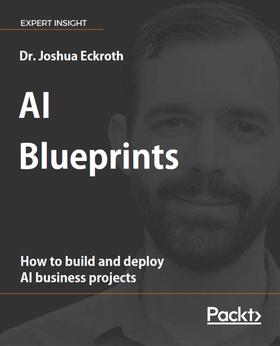
AI Blueprints
¥71.93
The essential blueprints and workflow you need to build successful AI business applications Key Features *Learn and master the essential blueprints to program AI for real-world business applications *Gain insights into how modern AI and machine learning solve core business challenges *Acquire practical techniques and a workflow that can build AI applications using state-of-the-art software libraries *Work with a practical, code-based strategy for creating successful AI solutions in your business Book Description AI Blueprints gives you a working framework and the techniques to build your own successful AI business applications. You’ll learn across six business scenarios how AI can solve critical challenges with state-of-the-art AI software libraries and a well thought out workflow. Along the way you’ll discover the practical techniques to build AI business applications from first design to full coding and deployment. The AI blueprints in this book solve key business scenarios. The first blueprint uses AI to find solutions for building plans for cloud computing that are on-time and under budget. The second blueprint involves an AI system that continuously monitors social media to gauge public feeling about a topic of interest - such as self-driving cars. You’ll learn how to approach AI business problems and apply blueprints that can ensure success. The next AI scenario shows you how to approach the problem of creating a recommendation engine and monitoring how those recommendations perform. The fourth blueprint shows you how to use deep learning to find your business logo in social media photos and assess how people interact with your products. Learn the practical techniques involved and how to apply these blueprints intelligently. The fifth blueprint is about how to best design a ‘trending now’ section on your website, much like the one we know from Twitter. The sixth blueprint shows how to create helpful chatbots so that an AI system can understand customers’ questions and answer them with relevant responses. This book continuously demonstrates a working framework and strategy for building AI business applications. Along the way, you’ll also learn how to prepare for future advances in AI. You’ll gain a workflow and a toolbox of patterns and techniques so that you can create your own smart code. What you will learn *An essential toolbox of blueprints and advanced techniques for building AI business applications *How to design and deploy AI applications that meet today’s business needs *A workflow from first design stages to practical code solutions in your next AI projects *Solutions for AI projects that involve social media analytics and recommendation engines *Practical projects and techniques for sentiment analysis and helpful chatbots *A blueprint for AI projects that recommend products based on customer purchasing habits *How to prepare yourself for the next decade of AI and machine learning advancements Who this book is for Programming AI Business Applications provides an introduction to AI with real-world examples. This book can be read and understood by programmers and students without requiring previous AI experience. The projects in this book make use of Java and Python and several popular and state-of-the-art opensource AI libraries.
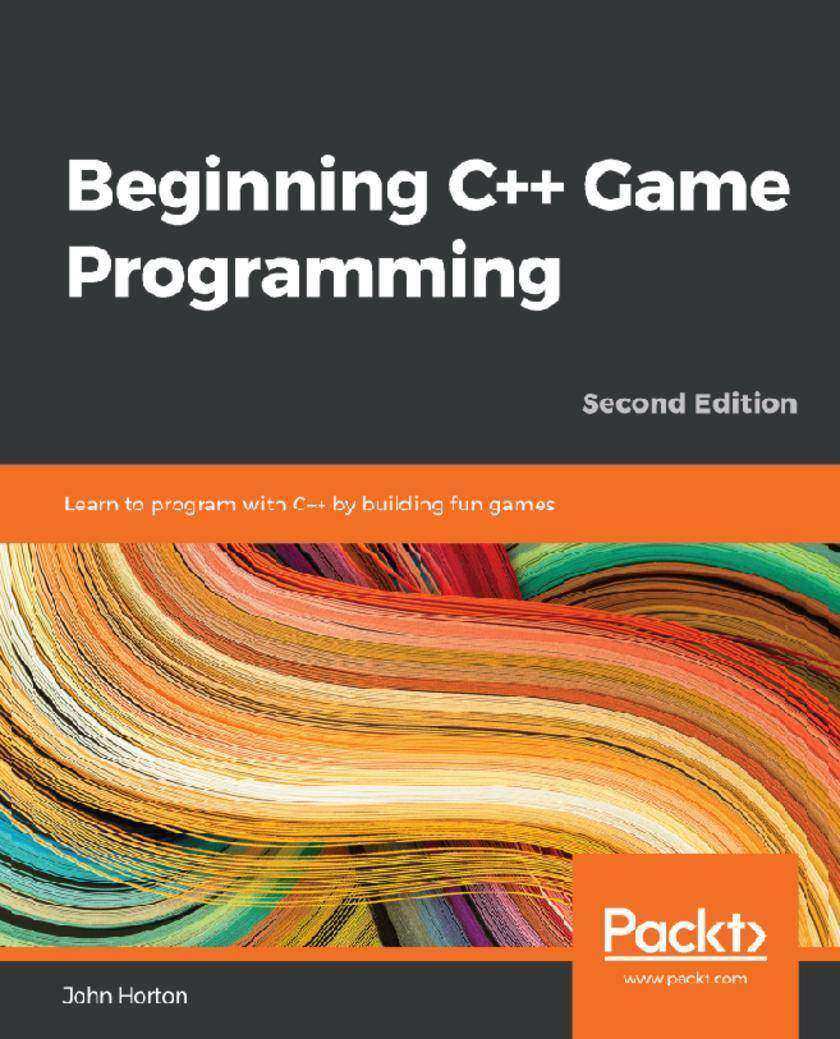
Beginning C++ Game Programming
¥71.93
Get to grips with programming techniques and game development using C++ libraries and Visual Studio 2019 Key Features * Learn game development and C++ with a fun, example-driven approach * Build clones of popular games such as Timberman, Zombie Survival Shooter, a co-op puzzle platformer, and Space Invaders * Discover tips to expand your finished games by thinking critically, technically, and creatively Book Description The second edition of Beginning C++ Game Programming is updated and improved to include the latest features of Visual Studio 2019, SFML, and modern C++ programming techniques. With this book, you’ll get a fun introduction to game programming by building five fully playable games of increasing complexity. You’ll learn to build clones of popular games such as Timberman, Pong, a Zombie survival shooter, a coop puzzle platformer and Space Invaders. The book starts by covering the basics of programming. You’ll study key C++ topics, such as object-oriented programming (OOP) and C++ pointers, and get acquainted with the Standard Template Library (STL). The book helps you learn about collision detection techniques and game physics by building a Pong game. As you build games, you’ll also learn exciting game programming concepts such as particle effects, directional sound (spatialization), OpenGL programmable shaders, spawning objects, and much more. Finally, you’ll explore game design patterns to enhance your C++ game programming skills. By the end of the book, you’ll have gained the knowledge you need to build your own games with exciting features from scratch What you will learn * Set up your game development project in Visual Studio 2019 and explore C++ libraries such as SFML * Explore C++ OOP by building a Pong game * Understand core game concepts such as game animation, game physics, collision detection, scorekeeping, and game sound * Use classes, inheritance, and references to spawn and control thousands of enemies and shoot rapid-fire machine guns * Add advanced features to your game using pointers, references, and the STL * Scale and reuse your game code by learning modern game programming design patterns Who this book is for This book is perfect for you if you have no C++ programming knowledge, you need a beginner-level refresher course, or you want to learn how to build games or just use games as an engaging way to learn C++. Whether you aspire to publish a game (perhaps on Steam) or just want to impress friends with your creations, you’ll find this book useful.
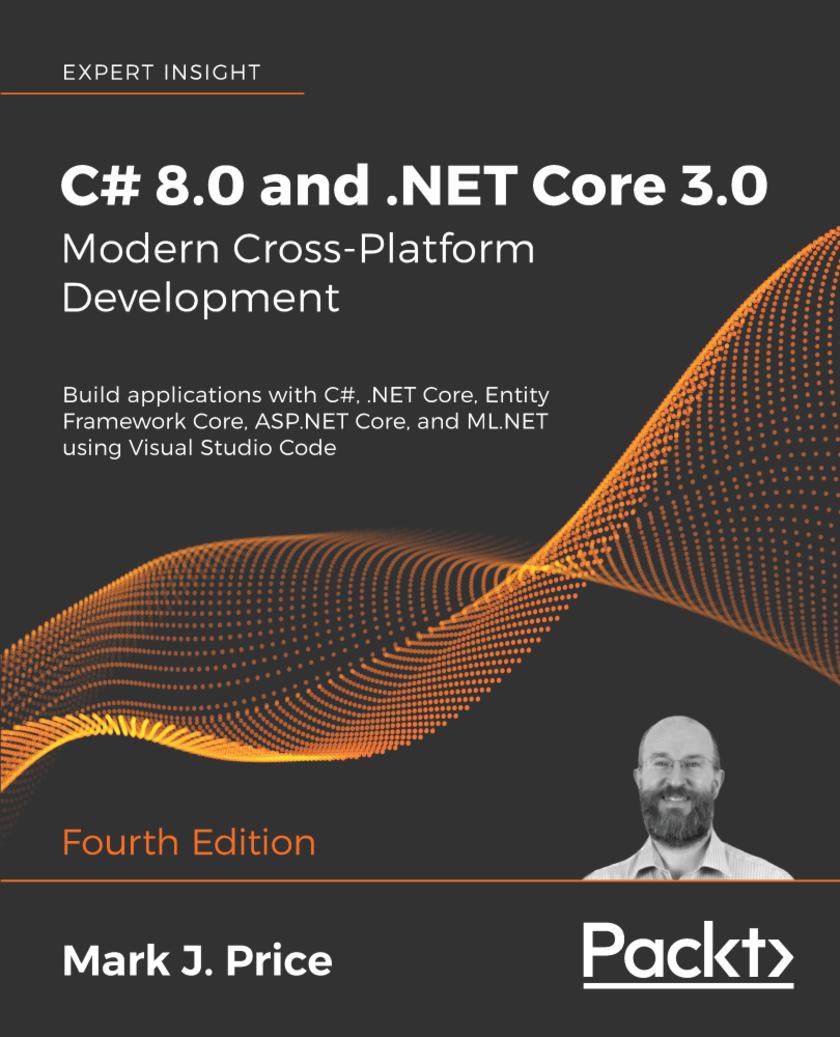
C# 8.0 and .NET Core 3.0 – Modern Cross-Platform Development
¥71.93
Learn the fundamentals, practical applications, and latest features of C# 8.0 and .NET Core 3.0 from expert teacher Mark J. Price. Key Features * Build modern, cross-platform applications with .NET Core 3.0 * Get up to speed with C#, and up to date with all the latest features of C# 8.0 * Start creating professional web applications with ASP.NET Core 3.0 Book Description In C# 8.0 and .NET Core 3.0 – Modern Cross-Platform Development, Fourth Edition, expert teacher Mark J. Price gives you everything you need to start programming C# applications. This latest edition uses the popular Visual Studio Code editor to work across all major operating systems. It is fully updated and expanded with new chapters on Content Management Systems (CMS) and machine learning with ML.NET. The book covers all the topics you need. Part 1 teaches the fundamentals of C#, including object-oriented programming, and new C# 8.0 features such as nullable reference types, simplified switch pattern matching, and default interface methods. Part 2 covers the .NET Standard APIs, such as managing and querying data, monitoring and improving performance, working with the filesystem, async streams, serialization, and encryption. Part 3 provides examples of cross-platform applications you can build and deploy, such as web apps using ASP.NET Core or mobile apps using Xamarin.Forms. The book introduces three technologies for building Windows desktop applications including Windows Forms, Windows Presentation Foundation (WPF), and Universal Windows Platform (UWP) apps, as well as web applications, web services, and mobile apps. What you will learn * Build cross-platform applications for Windows, macOS, Linux, iOS, and Android * Explore application development with C# 8.0 and .NET Core 3.0 * Explore ASP.NET Core 3.0 and create professional web applications * Learn object-oriented programming and C# multitasking * Query and manipulate data using LINQ * Use Entity Framework Core and work with relational databases * Discover Windows app development using the Universal Windows Platform and XAML * Build mobile applications for iOS and Android using Xamarin.Forms Who this book is for Readers with some prior programming experience or with a science, technology, engineering, or mathematics (STEM) background, who want to gain a solid foundation with C# 8.0 and .NET Core 3.0.




 购物车
购物车 个人中心
个人中心



